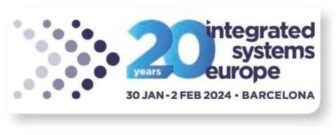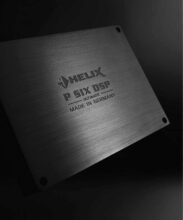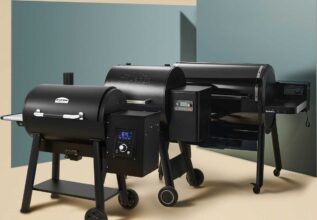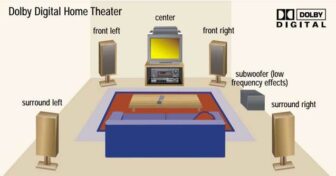Nikon D750
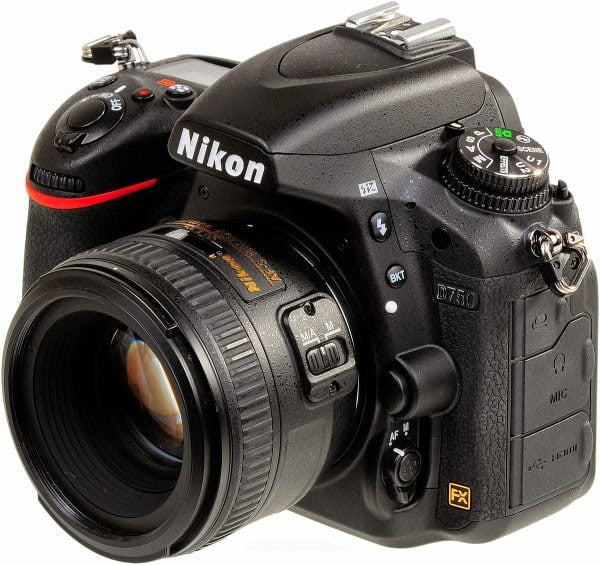
If the D810 is just a bit too much D-SLR for you and the D610 just not quite enough, then the D750 could be just right. Has Nikon built the perfect enthusiast-level D-SLR?
While it’s always tempting to think that too much resolution is never enough, there are some practicalities to consider with cameras like Nikon’s D810 or the EOS 5DS duo from Canon. Namely that big image files have a variety of logistical implications… they’ll slow you down if you don’t have sufficient computing power and they take up a lot more space both on your working drives and your storage devices. Yes, the image quality is stunning, but the question to ask yourself is whether you’ll really ever be able to take full advantage of it. The honest answer for many non-professional photographers is, probably not. Yet there are lots of other features of the D810 that are worth having, no matter what or why you shoot.
So here’s your camera. The D750 is essentially close to a D810, but with the CMOS sensor and shutter from the D610. OK, so that’s a bit of an over-simplification, but you get the general idea. In fact, the D750 exceeds a number of the D810’s specifications – for starters, it has a tilt-adjustable LCD monitor screen rather than a fixed panel – and its sensor is actually a revised version of the D610’s with a slightly higher total pixel count of 24.93 million, but retaining an optical low-pass filter (OLPF). Compared to the D610, the D750 has the later-generation ‘Expeed 4′ processor, upgraded metering and autofocusing (the AF even improved over the D810’s), faster continuous shooting, 1080/50p video recording, and a built-in Wi-Fi module. Compared to the D810, its top shutter speed stays at 1/4000 second (with a 150,000 cycles guaranteed life span rather than 200,000), it has dual SD memory card slots (rather than one SD and one CF), and there isn’t a PC flash terminal.Frankly, the plusses outweigh the few minuses – not everybody needs 1/8000 second – and having dual card slots of the same format seems to make a lot more sense than mixing them up. No PC terminal? Again, it won’t matter to a lot of users.
The more compact bodyshell is unique to the D750 and features a new monocoque design so the chassis is integrated into the one component. This benefits the overall strength, but eliminating separate covers also has benefits in terms of its weatherproofing as there are fewer joins and junctions. Additionally, the D750 is currently the smallest D-SLR on the market with a full-35mm sensor.
The materials are a combination of magnesium alloy and carbon fibre, but as a result of the inherent integrity of the one-piece design it feels extremely solid indeed. Nikon says that the D750’s weather sealing is “equivalent to the D810′.’ The viewfinder employs a full glass pentaprism – giving 100 percent scene coverage – with a newly-designed focusing screen which is claimed to be both brighter and clearer. As on the D810, the reflex mirror is treated with a special multi-coating for enhanced neutrality and the viewfinder display is an OLED type panel rather than LCD. The styling and control layout are very similar to that of all the current ‘FX’ format Nikon D-SLRs (except, of course, for the pro-level D4S) so everything centres around a main mode dial, front and rear input wheels, a monochrome LCD info panel (albeit narrower) and the ubiquitous ‘Multi Selector’ pad on the rear panel.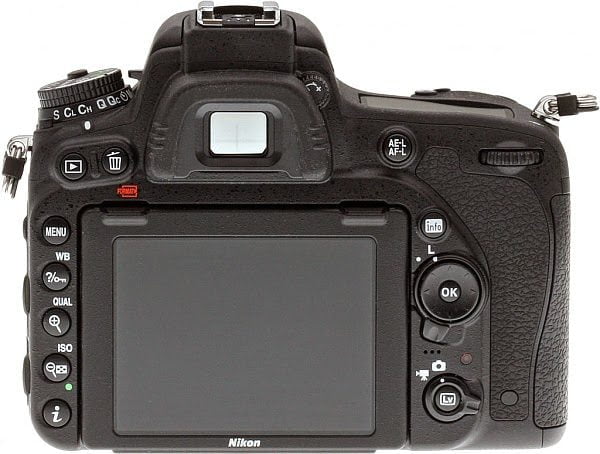
The D750’s AF system uses a new Mark II version of the 51-point Multi-CAM 3500FX module – also making an appearance in the new D7200 ‘DX’ format flagship – which has an extended low light sensitivity down to EV -3.0 (at ISO 100). Fifteen of the 51 points are cross-type arrays, all operational at f5.6 while eleven points – including one cross-type array – work with lenses as slow as f8.0. There’s the choice of single point selection or ‘dynamic area’ auto-switching modes for nine, 21 or the full 51 points. Additionally, there’s the ‘Group Area’ autofocusing mode (introduced on the D4S) which is primarily designed to ensure more accurate focus tracking of smaller subjects via a cluster of five focusing points (i.e. the active point and the four surrounding). The D750 has the same ‘3D Colour Matrix Metering III’ as the D810 which is based on a 91,000 pixels RGB-sensitive sensor with the option of matrix (i.e. multi-zone), centre-weighted average or spot measurements. The centre-weighted metering’s bias can be adjusted via adjusting the diameter of its central circle to 8.0 mm, 12 mm (the default), 15 mm or 20 mm. The D750 also has the ‘Highlight Weighted’ mode -introduced on the D810 – which adjusts exposures to maintain detailing in the brighter highlights.
The exposure control capabilities are the same as those provided on the D810 except that there’s also a set of subject modes as on the D610.
The main ‘PASM’ exposure control modes are backed by program shift, an AE lock, compensation up to +/-5.0 EV and auto bracketing. The AEB can be set to operate over sequences of between two to nine frames with plus/minus adjustments in one-third, one-half, two-thirds or full stops; or over sequences of up to five frames with adjustments in plus/minus two or three stops. Flash bracketing is also available in the same range of settings and the D750’s built-in unit also allows for manual control down to 1/128 of full power. Alternatively, TTL auto control is also based on the 91,000 pixels RGB sensor with the options of front or rear curtain sync, slow-speed sync and Auto FP’ high-speed sync. Additionally, the built-in flash serves as the commander module for a wireless TTL flash set-up using compatible Nikon Speedlight units.
White balance control is also performed via the 91 K RGB metering sensor. The standard automatic correction has a range of 3500 to 8000 degrees Kelvin, but there’s the option of a ‘Keep warm lighting colours’ or Auto 2′ setting which is designed to maintain the warmer tones when shooting under incandescent lighting. There is a total of 12 presets, including seven for the various different types of gas-ignition lamps ranging from sodium-vapour at 2700 degrees Kelvin to mercury-vapour at 7200 degrees Kelvin.
Fine-tuning of all the presets is possible in five-mired increments across the green-to-magenta and blue-to-amber colour ranges. Alternatively, the colour temperature can be set manually from 2500 to 10,000 degrees Kelvin. White balance bracketing can be in one-, five- or ten-mired increments and over either two or three frames (while the D810 has additional choices for five, seven or nine frames). Up to six custom white balance measurements can be created and stored.The D750 also pretty closely shadows the D810 in terms of its JPEG processing options, including an additional ‘Picture Control’ preset called Flat which is designed for use with video recording (for more about the D750’s video capabilities go to the Making Movies panel).
The remaining ‘Picture Control’ presets comprise the longstanding choices of Standard, Neutral, Vivid, Monochrome, Portrait and Landscape. The colour presets have adjustments for Sharpness, Contrast, Brightness, Saturation and Hue plus Clarity, the additional parameter introduced with the D810 and which adjusts the contrast of mid-tones to help enhance detailing.The Monochrome preset also has the new Clarity adjustment, but replaces the colour-related parameters with a set of B&W contrast filters and a wide selection of toning colours (with adjustable density). As is common across the Nikon D-SLR line-up, these parameters can be adjusted separately or collectively via a ‘Quick Adjust’ option. Alternatively, there’s an Auto’ setting for the sharpening, clarity, contrast and saturation controls which works according to the exposure and also the position of the subject in the frame. Up to nine user-modified ‘Picture Controls’ can be created and stored.
Dynamic range expansion processing is performed via Nikon’s ‘Active D-Lighting’ correction which, on the D750, has the choice of an auto mode or four presets called Low, Normal, High and Extra High. ADL works along the same lines as the ‘Shadow/Highlight’ adjustment in Photoshop, combining exposure and tone curve adjustments to optimise brightness and dynamic range. ADL bracketing is available and can be set to sequences of two, three, four or five frames.The D750 also has a multi-shot HDR mode which captures two images at a time – one underexposed, the other overexposed – and combines them to give an extended dynamic range. The exposure adjustment can be done automatically (based on the scene’s contrast range) or manually set to Low, Normal, High or Extra High. Operationally, HDR capture can be set to self-cancel after one shot or continue until it’s manually cancelled. There’s a multiple exposure mode and the same intervalometer and time-lapse functions as the D810 (allowing sequences of up to 9999 frames). However, unlike the D810, the D750 offers a small selection of Special Effects – for the first time on a Nikon ‘FX’ format D-SLR – which can be applied at the point of capture or when shooting video; namely Night Vision, Colour Sketch, Miniature, Selective Colour, Silhouette, High Key and Low Key. As before, a selection of effects are also available for post-capture editing via the camera’s Retouch Menu and these include ‘Fish-Eye’, ‘Colour Outline’, ‘Colour Sketch’, ‘Miniature Effect’ and ‘Select Colour’. There’s a ‘Quick Retouch’ setting which automatically boosts the saturation and contrast with the choice of ‘Low’, ‘Normal’ and ‘High’ settings. The other offerings in the Retouch Menu include straightening, distortion control, perspective control, red-eye correction, adjustments to colour balance (using RGB histograms for guidance), trimming, B&W conversion (with either sepia or cyanotype toning), skylight or warm filter effects, image overlay (for two RAW files with the capacity to balance the exposures as required), resizing, in-camera RAW-to-JPEG conversion and basic movie editing. Many of these editing functions are adjustable and, of course, the effects can be previewed. Also here is a postcapture processing alternative for dynamic range expansion, now just called ‘D-Lighting’ and with the simple choice of either Low or High settings.
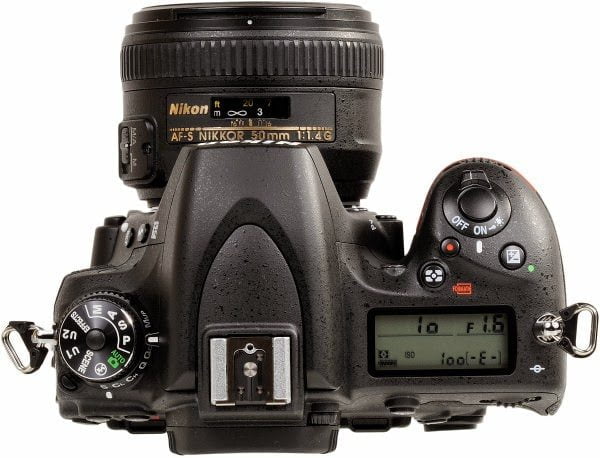
The D750’s CMOS sensor has an imaging area of 35.9×24.0 mm and the effective pixel count is 24.3 million, giving a maximum image size of 6016×4016 pixels. The sensitivity range is equivalent to ISO 100 to 12,800 with the choice of a one-stop ‘pull’ to ISO 50 and a two-stop ‘push’ to ISO 51,200.As on all Nikon’s ‘FX’ format D-SLRs, there’s the option of using the ‘DX’ format (i.e. APS-C’) which delivers a maximum image size of 3936×2624 pixels. This can be set to engage automatically when a ‘DX’ format lens is fitted. Additionally, there’s a ‘1.2x’ crop which has an imaging area of 30×20 mm and gives a maximum image size of 5008×3336 pixels (and with, obviously, a 1.2x increase in the effective focal length of the lens). JPEGs can be captured in two smaller sizes in each format and the choice of three levels of compression (corresponding to 1:4, 1:8 and 1:16). Additionally, the compression regime can be set to either ‘Size Priority’ or ‘Optimal Quality’. RAW files can be captured at 12-bits or 14-bits per RGB channel and either lossless compressed or compressed. However, RAW files can only be captured in one size and the D750 doesn’t have a RGB TIFF mode. RAW+JPEG capture can be configured to any of the RAW settings with a large JPEG at one of the three compression levels. Continuous shooting is possible at up to 6.5 fps compared to 6.0 fps for the D610 and 5.0 fps for the D810. The D750 has the quiet continuous (‘Qc’) mode found on both the D610 and D810, and here the maximum shooting speed is 3.0 fps.
The buffer memory accommodates up to 100 maximum-quality JPEGs or 48 frames with lossless compressed 14-bit NEF RAW capture.The SD card slots support the HC and XC higher-capacity types plus UHS-I speed versions, but this is starting to look a bit tame in comparison to the growing numbers of enthusiast-level cameras with UHS-II or Speed Class 3 support.
There’s a choice of file management options namely Overflow (for automatic changeover), Back Up (for simultaneous recording to both cards) or RAW Slot 1 – JPEG Slot 2 (which is self-explanatory). A card can also be assigned to movie clips.
It’s been a long time since Nikon has made any significant changes to the user interface in its D-SLRs, but the D750 gets an all-new information display (now also on the D7200).The redesign gives a crisper, cleaner look which is assisted by the brighter RGBW array and the 1.229 megadots resolution. Depending on ambient light levels, it automatically switches between a black-on-white or a white-on-black display (and either can also be set manually).It’s comprehensive, but totally passive so has no role as a control panel. However, as on the D810, there’s an ‘i’ button which provides direct access to a conventional ten-item menu instead of the previously rather confusing ‘Shooting Menu Bank’ and ‘Custom Setting Bank’. ‘My Menu’ is very much easier to populate with your most frequently-used settings than the clunky ‘banks’ of functions… and it allows for more items to be included. With live view, a selection of function tiles is arranged down the right side of the monitor screen.
The main monitor screen can also be used to display a dual-axis level indicator which Nikon calls a ‘Virtual Horizon’ display, but the implementation of this is a bit clunky (you have to go via the Set Up Menu every time). It’s much easier to engage in live view where it’s one of a number of display configurations which also include a real-time histogram (although only when exposure preview is actually enabled) and a grid guide.Both the grid and a dual-axis level indicator are also available in the viewfinder, the latter is a little less grand than the virtual horizon display.The image review screens can, as usual on a Nikon D-SLR, be expanded to cycle through a variety of displays, including a thumbnail with a full set of brightness and RGB histograms, and various pages of image capture data which increases if copyright details are included and/or the optional GPS receiver is fitted. The highlight warning can be cycled through the RGB channels separately. The playback options include 4/9/72 thumbnail displays, a calendar thumbnail page, zooming up to 38x and a simple slide show with variable image display times.
Quite a number of the D750’s controls can be customised, including the preview button, the front/rear input wheels, the AE/AF lock button plus there’s an ‘Fn’ button which can be assigned a range of functions, either by itself or in conjunction with the input wheels.The menu system employs Nikon’s standard D-SLR design which remains the best in the business for the logic of its layout and the ease of navigation. Each chapter is continuous scrollable and accessed via a set of tabs. Navigation is via a sequence of right clicks and the Custom Menu is neatly organised into the key areas of camera control… i.e. Autofocus, Metering/Exposure, Shooting/ Display, etc. You simply can’t get lost and everything is exactly where you’d expect it to be.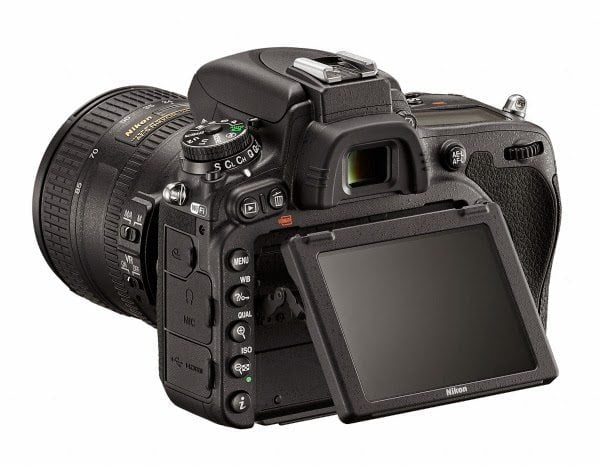
With our Lexar Professional 600x 64 GB SDXC UHS-I reference memory card loaded, the D750 captured 30 JPEG/large/fine frames in 4.632 seconds, representing a shooting speed of 6.48 fps which is only a whisker off 6.5 fps. Additionally, Nikon bases its quoted speed on an average file size of 12.6 MB whereas our test files were actually typically around 18 MB in size. In the ‘Quiet Continuous’ mode – which, as we observed with the D610, isn’t actually as quiet as you might expect – the D750 fired off a burst of 50 maximum quality JPEGs in 16.121 seconds which represents a shooting speed of 3.1 fps.
The 51-point AF was already pretty fast – as sampled on the D810 – but what’s been added is improved performance in low light situations which is particularly noticeable when shooting at dusk or dawn. In situations where you might expect to focus manually, the D750’s AF was still operating very responsively and reliably. The 91 K RGB metering is also extremely reliable, even in very contrasty lighting situations and we found there was less need to fine-tune exposures via compensation. The Highlight-weighted metering essentially underexposes by varying amounts to preserve detail in these brighter areas, but the same end result can be achieved by using minus exposure compensation which, of course, is applied in known quantities.
Regardless of any of these tweaks, though, the dynamic range is pretty good straight out of the camera for both JPEGs and RAW files, but as we’ve noted with most Nikon D-SLRs, the ADL expansion processing helps further, maintaining more tonality in both the shadows and the highlights.The Picture Control’ presets obviously provide plenty of scope for tweaking the way a JPEG looks, but Vivid is arguably the pick of them in terms of balancing saturation, sharpness and contrast. Conversely, the Flat preset maximises the dynamic range, leaving everything else – most notably the contrast and saturation -to be processed post-camera (i.e. in grading for video).
With the extra ‘smarts’ of the ‘Expeed 4’ processor at work, the D750 delivers a noticeable better high ISO performance than the D610. Noise is negligible up to ISO 1600 and it’s well-suppressed at both ISO 3200 and 6400 without unduly compromising definition or saturation, although some graininess starts to become evident the darker areas with continuous tone. Graininess is more noticeable at ISO 12,800, but even this setting is still useable because its structure is quite smooth.
In terms of video shooting, the D750 has pretty much all the capabilities of the D810 which is good news indeed because the latter camera is one of the most capable FHD D-SLRs currently available. Full HD video is recorded at 50 fps with progressive scanning and there’s the choice of recording at either 25 or 24 fps. Footage can also be recorded at 720/50p and all settings can be set to either ‘Normal’ or ‘High’ quality. An uncompressed feed is available at the camera’s HDMI terminal, enabling 8-bit 4:2:2 colour video to be recorded on an external recorder, and compressed video (H.264/MPEG-4 AVC with 4:2:0 colour) can be simultaneously recorded to one of the memory cards as a back-up. The Flat ‘Picture Control’ preset and the highlight-weighted metering mode mentioned in the main text are both features with benefits for video shooters.
Movies can be shot in either the ‘FX’ or ‘DX’ formats (both at the 16:9 aspect ratio), the latter obviously giving a ‘free’ 1.5x increase in the lens focal length and, incidentally, is also essentially the ‘Super 35’ video format. All the ‘PASM’ exposure modes are available, and auto ISO control in the manual mode so, for example, a desired aperture can be maintained even in changing light levels.
The D750 also has the handy ‘Power Aperture’ control (via the ‘Fn’ and W buttons) – allowing for fine adjustments in 1/8 EV increments – and available on-the-fly whether recording to an external device or internally to a memory card. The full sensitivity range is available from ISO 64 to 12,800 plus the two higher expansion settings, but an upper limit can be manually set with Auto ISO control. Also available is a zebra pattern generator (a more effective way of showing blown highlights when shooting video), a time-lapse function with exposure ‘smoothing’ (to avoid big variations in brightness) and the full selection of live view displays including the real-time histogram, grid guide and the ‘Virtual Horizon’ (although not all together).
The D750 is equipped with built-in stereo microphones, and there’s considerable scope for control of the recording levels whether using these or an external mic.There is the choice of ‘Wide’ and ‘Vocal’ frequency response settings, manual level adjustment (over a 20-step range) and a switchable wind noise filter. The 3.5 mm stereo audio input is accompanied by a 3.5 mm stereo output for connecting monitoring headphones.Nikon has definitely upped the ante with its latest full-35mm D-SLRs as far as video is concerned and, of course, the D750 also has size on its side when it comes to competing with the mirrorless cameras. It’s actually reasonably close in dimensions to Panasonic’s Lumix GH4 and the Samsung NX1, and while it doesn’t have 4K recording, it’s pretty competitive everywhere else, including with its 2K image quality.

Nikon has had to tread a very fine line to ensure that the D750 didn’t tread too heavily on the D810’s toes so there are a couple of key omissions, but the reality is that this camera is primarily aimed at users who really don’t want – or, indeed, need – the higher resolution sensor with all its extra demands. It’s clearly superior to the D610 which, although still pretty well-equipped, starts to look a bit ‘poverty pack’ in comparison. The D750 is not only more compact (and feels more solidly built), but it has better AF, AE and WB systems; quite a number of additional features (including the tilt-adjustable monitor screen), enhanced image processing (particularly noise reduction) and significantly increased video functionality.
As a complete package – with relative affordability also thrown into the mix – it’s arguably the best combination of everything you can have in a full-35mm D-SLR right now.
Type: Enthusiast/semi-professional digital SLR with Nikon F (D-type) bayonet lens mount.
Focusing: Automatic via 51-point wide-area system using phase-detection type CCD sensor with 15 cross-type arrays. Focus points may be selected manually or automatically and either as single points or in groups (9/21/51) plus Group-Area AF mode which uses a wider detection zone made up of five points. Points re-orientated for vertical shooting. One-shot and continuous modes both with a predictive function. 3D Tracking mode. Sensitivity range is EV -3 -19 (ISO 100). AF assist provided by built-in illuminator. AF micro-adjustment for individual lenses (up to 20). Contrast-detection AF in live view and video modes.
Metering: 91,000 pixels RGB ‘3D Color Matrix III’, centre-weighted average (with variable diameter weighting – 8.0mm, 15mm or 20mm), spot (4.0mm/1.5%), highlight-weighted, and i-TTL flash via 91,000-pixel sensor. Metering ranges are; 3D Color Matrix and C/W average = EV 0 to 20; spot = EV 2 to 20 (f1.4/ISO 100).
Exposure Modes: Continuously-variable program with shift, shutter-priority auto, aperture-priority auto, metered manual. i-TTL auto flash and manual flash. 16 subject/scene modes.
Shutter: Electronically-controlled, vertical travel, focal plane type, 30-1/4000 second plus ‘B’. Flash sync up to 1/200 second. Exposure compensation up to +/-5.0 EV in 1/3 or 1/2 stop increments.
Viewfinder: Coverage = 100% vertical/horizontal. Magnification = 0.70x |50mm lens at infinity). OLED displays and LED focus point indicators. Standard focusing screen has AF zones and on-demand grid lines. Eyepiece strength adjustment provided.
Flash: Built-in pop-up unit with GN 12 power (ISO 100). Auto, fill-in. red-eye reduction, front/rear sync and slow speed sync modes. Commander mode for wireless TTL control of compatible external flash units. External flash units connect via hotshoe. Flash compensation range of -3.0 to +1.0 EV in 1/3 or 1/2 stop increments and flash bracketing (up to three frames). Manual control down to 1/128 of full power.
Additional Features: Magnesium alloy/car-bonfibre bodyshell sealed against dust and moisture, auto exposure bracketing (over three frames) AE+flash bracketing, depth-of-field preview, AE lock, exposure adjustments in either 1/3 or /2 stop increments, variable delay and multi-shot self-timer (two to 20 seconds, up to nine frames), mirror lock-up, quiet shutter mode, audible signals, wired remote control terminal, wireless remote control, 54 custom functions.
Sensor: 24.93 million pixels CMOS with 35.9×24.0 mm area. Sensitivity equivalent to ISO 100-12,800 (extendable to ISO 50 and 51,200).
Formats/Resolution: Three JPEG compression settings (1:4,1:8 and 1:16), and lossless compressed, compressed or uncompressed RAW files. Three resolution settings at 3:2 aspect ratio; 6016×4016, 4512×3008 and 3008×2008 pixels. Three resolution settings in ‘1.2x’ format (30×20 mm); 5008×3336, 3572×2504 and 2504×1664 pixels. Three resolution settings in ‘1.2x’ format (24×16 mm); 3936×2624, 2944×1968 and 1968×1312 pixels. Additionally, still images can be captured in the movie mode in the ‘FX’ and ‘DX’ formats and the 16:9 aspect ratio, again at three resolution settings. RAW (NEF) images are captured at 6016×4016 pixels, in either 36-bit or 42-bit RGB colour, and either lossless compressed or compressed. RAW+JPEG capture is possible (with all JPEG compression levels).
Video Recording: Full HD = 1920×1080 pixels at 50, 25 or 24 fps (PAL, progressive) and 16:9 aspect ratio. HD = 1280×720 pixels at 50 fps (PAL, progressive) and 16:9 aspect ratio. MPEG 4 AVC/H .264 compression. Stereo sound recording with auto/manual adjustable levels. Stereo microphone input and headphone output provided. Clip duration limited to 20 minutes at normal quality (1080/50p, 24 Mbps), up to 10 minutes at high quality (1080/50p, 42 Mbps). File size limit is 4.0 GB.
Video Features: Index marking, zebra pattern, time lapse recording, auto flicker detection, uncompressed 8-bit RAW data output via HDMI connection (with simultaneous recording to a memory card).
Recording Media: Two slots for SD/SDHC/ SDXC (UHS-I compliant) memory cards. Overflow, Backup and RAW Primary-JPEG Secondary file management modes.
Continuous Shooting: Up to 87 frames at 6.5 fps in JPEG/large/fine mode, up to 15 frames in RAW mode (14-bit, lossless compressed). Low speed continuous shooting mode can be set from 1.0 to 6.0 fps. Quiet continuous mode operates at 3.0 fps.
White Balance: TTL measurements using the 91 к-pixels RGB metering sensor. Auto/manual control with 12 presets and six custom settings. White balance fine-tuning available for AWB and all presets plus manual colour temperature setting (2500-10,000 degrees Kelvin) and white balance bracketing (up to three frames). Warm AWB setting maintains a warmer hue under incandescent lighting.
Interfaces: USB 2.0, HDMI output (Type C), 3.5mm stereo audio input, 3.5mm stereo audio output, accessory terminal.
Additional Digital Features: Active sensor cleaning, dual-axis ‘virtual horizon’ display, live view functions (with contrast-detection AF), 8.1 cm LCD monitor (1.23 megadots resolution) adjustable for tilt, ‘Active D-Lighting’ contrast control (Auto, Low, Normal, High, Extra High), ADL bracketing (up to three frames), seven ‘Picture Control’ presets (Standard, Neutral, Vivid, Monochrome, Portrait, Landscape, Flat), adjustable ‘Picture Control’ parameters (Sharpening, Clarity, Contrast, Brightness, Saturation, Hue). B&W filters and toning effects, nine user-defined ‘Picture Control’ modes, seven at-capture special effects (Night Vision, Colour Sketch, Miniature, Selective Colour, Silhouette, High Key, Low Key), multiple exposure facility (up to three frames with Auto Gain), intervalometer, HDR dial-shot capture (Auto, Extra High, High, Normal, Low), sRGB and Adobe RGB colour spaces, long exposure noise reduction (Off, On), high ISO noise reduction (Off, Low, Normal, High), auto ISO with auto minimum shutter speed control, lens distortion correction (Off, On), lens vignetting correction (Off, Low, Normal, High), real-time histogram (in live view), image comments input (up to 36 characters), auto image orientation, adjustable image display time, slide show, brightness and RGB histograms, highlight alert, 4/9/72 thumbnail displays, calendar thumbnail display, playback 200m (up to 38x in ‘FX’ format), ‘Retouch Menu’ for in-camera editing (D-Lighting, Red-Eye Correction, Trim, Monochrome, Filter Effects, Colour Balance, Image Overlay, RAW Processing, Resize, Quick Retouch, Straighten, Distortion Control, Fish-Eye, Colour Outline, Colour Sketch, Perspective Control, Miniature Effect, Selective Colour, Edit Movie, Side-By-Side Comparison), built-in Wi-Fi. May be fitted with optional GP-1 or GP-1A GPS receivers. PictBridge and DPOF support.
Power: One 7.0 volt, 1900 mAh rechargeable lithium-ion battery pack (EN-EL15 type). Optional MB-D16 battery grip accepts one EN-EL15 Li-ion pack or six AA-size batteries (alkaline, NiMH or lithium).
Dimensions (WxHxD): Body only = 140.5×113.0x78.0 mm.
Weight: Body only = 750 grams (without battery pack or memory card).



